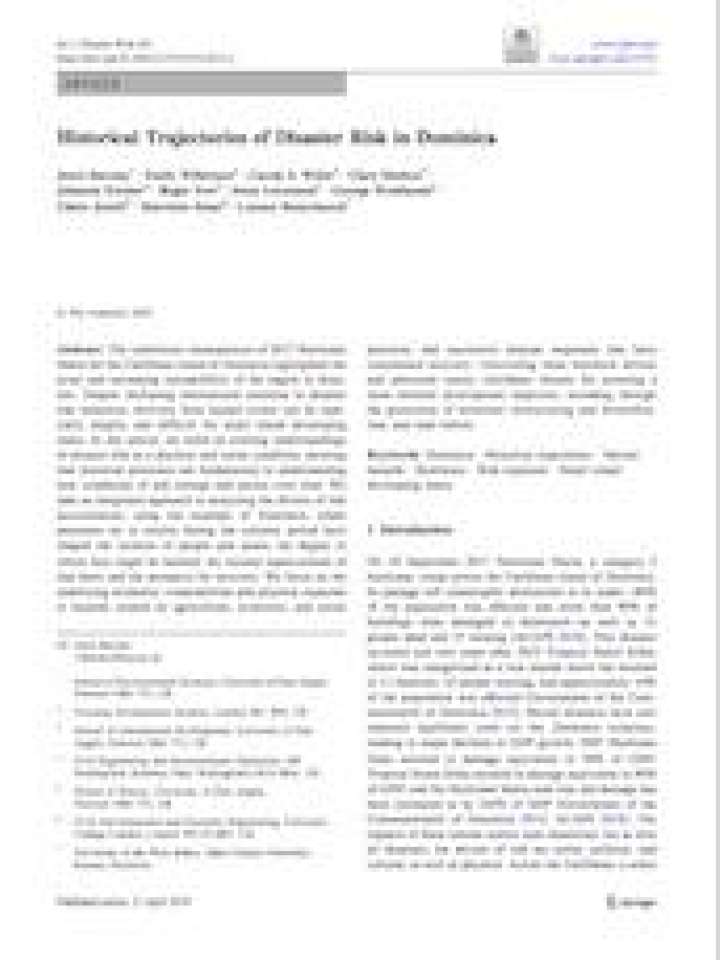Historical trajectories of disaster risk in Dominica
The calamitous consequences of 2017 Hurricane Maria for the Caribbean island of Dominica highlighted the acute and increasing susceptibility of the region to disasters. Despite increasing international attention to disaster risk reduction, recovery from hazard events can be especially lengthy and difficult for small island developing states. This article builds on existing understandings of disaster risk as a physical and social condition, showing that historical processes are fundamental to understanding how conditions of risk emerge and persist over time.
The authors take an integrated approach to analyzing the drivers of risk accumulation, using the example of Dominica, where processes set in motion during the colonial period have shaped the location of people and assets, the degree to which they might be harmed, the societal repercussions of that harm and the prospects for recovery. The researchers focus on the underlying economic vulnerabilities and physical exposure to hazards created by agricultural, economic, and social practices, and successive disaster responses that have constrained recovery. Uncovering these historical drivers and persistent issues, elucidates lessons for pursuing a more resilient development trajectory, including through the promotion of economic restructuring and diversification, and land reform.
